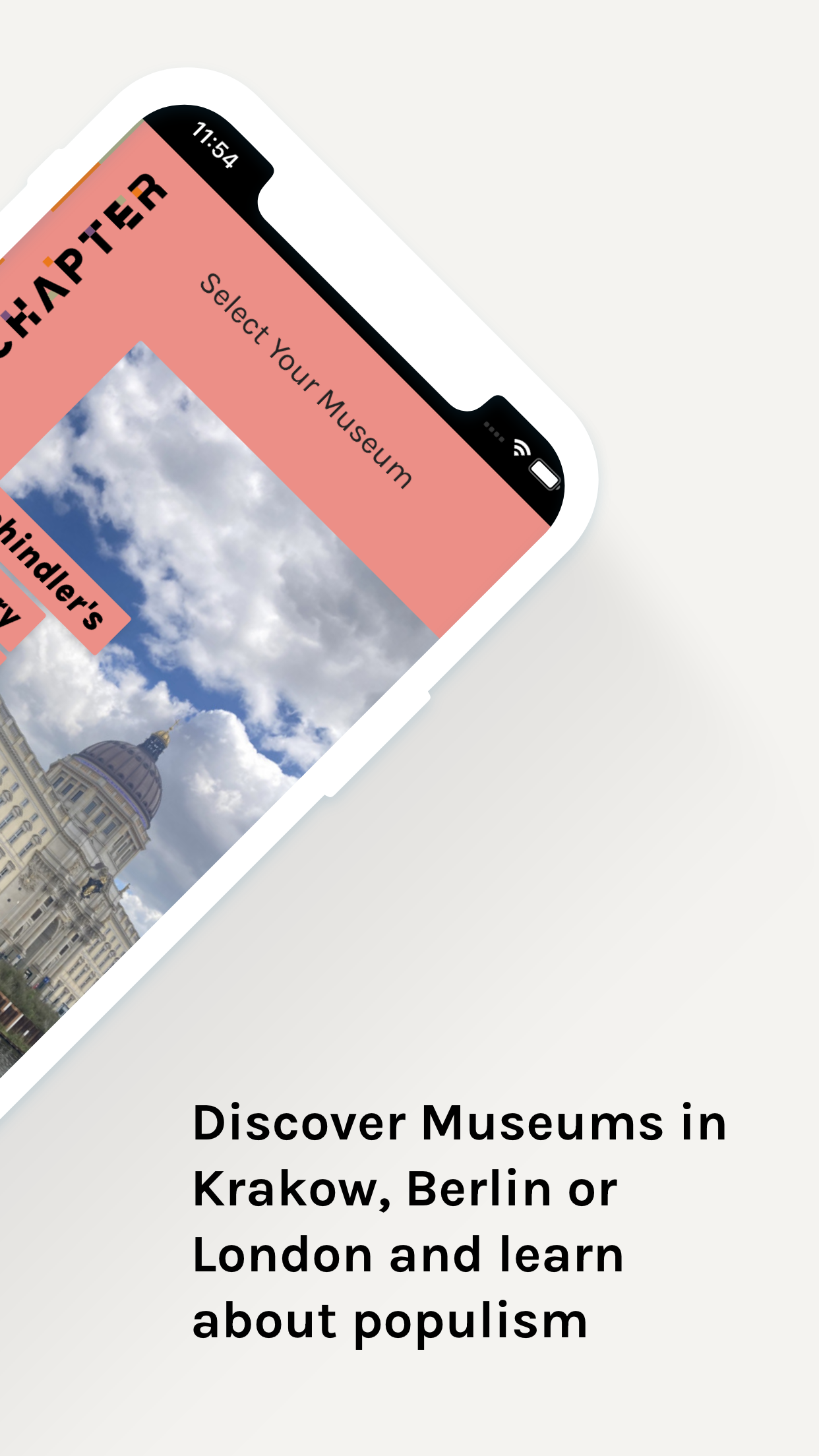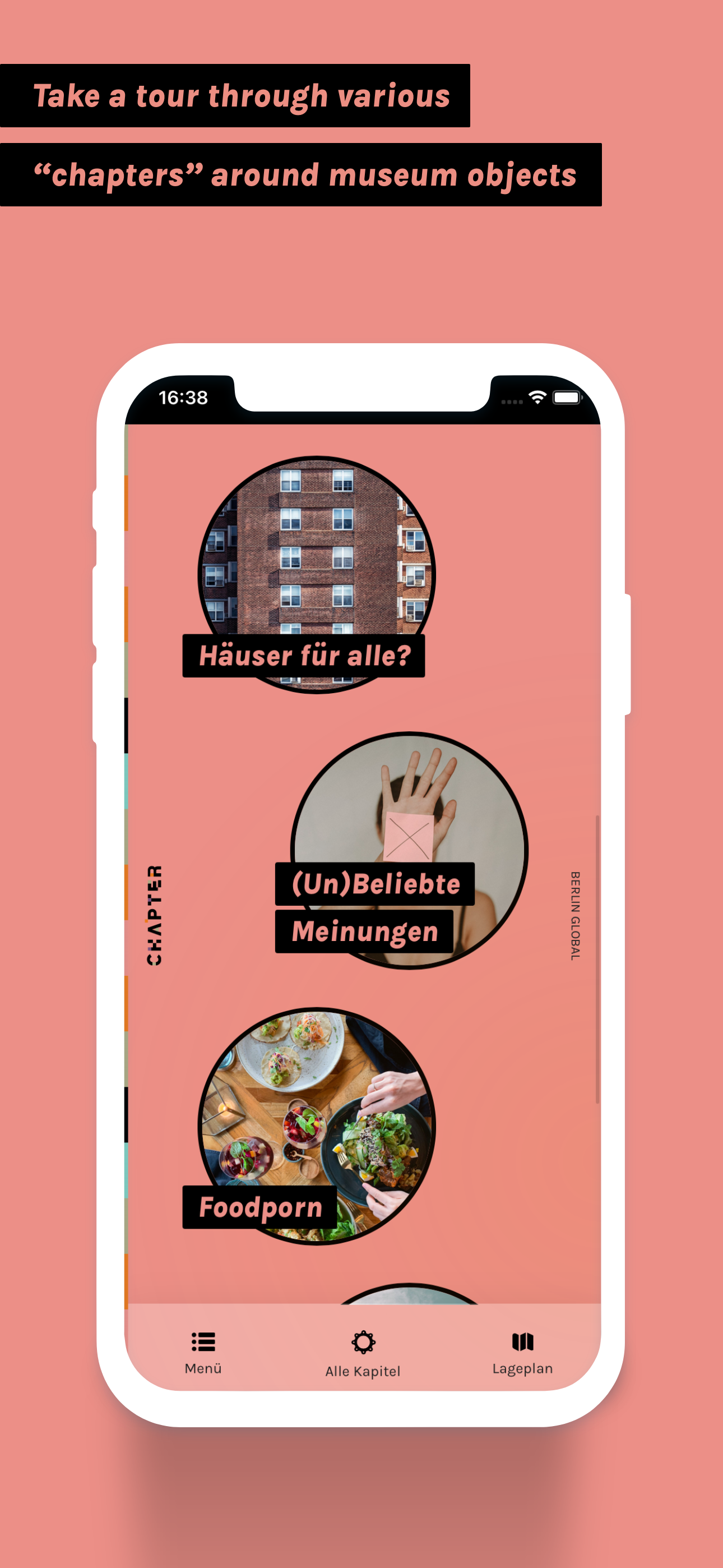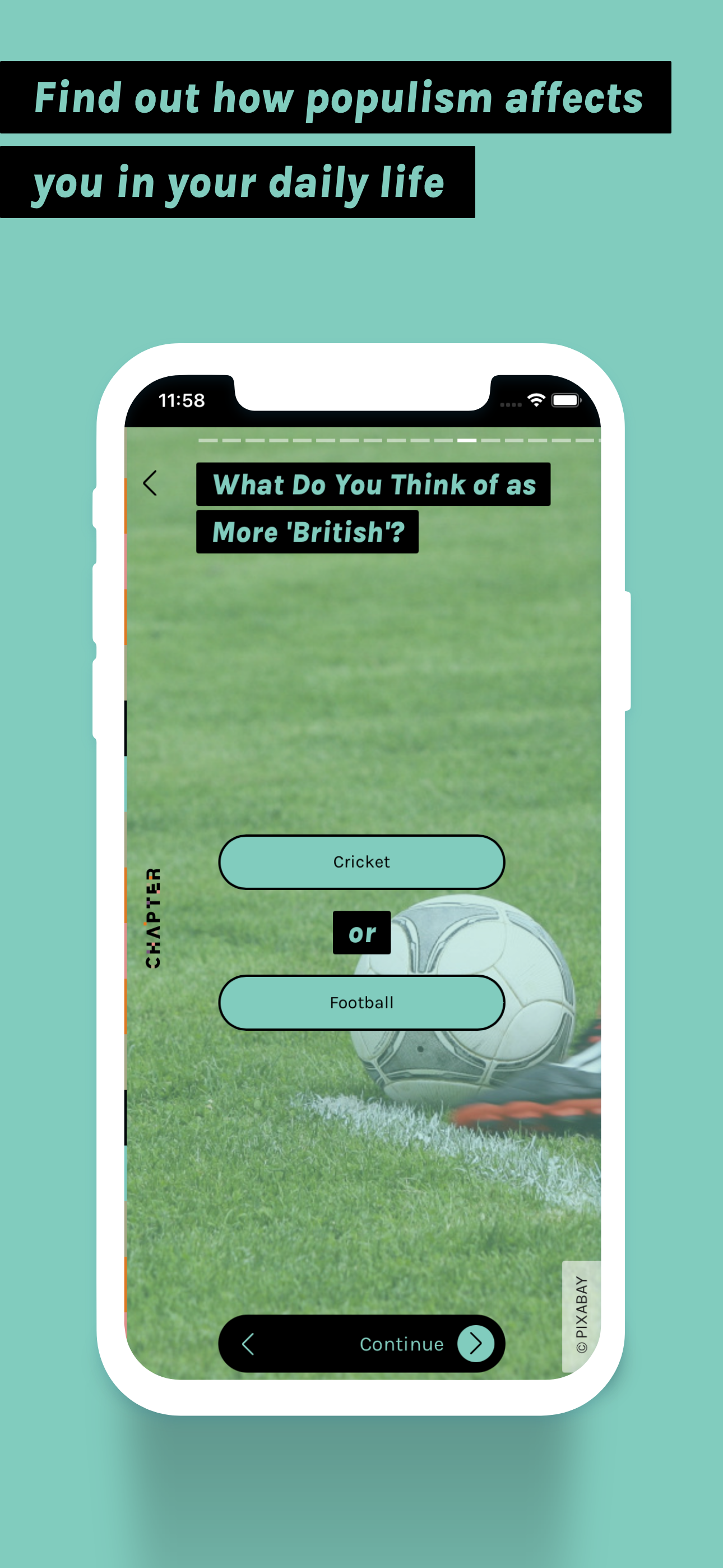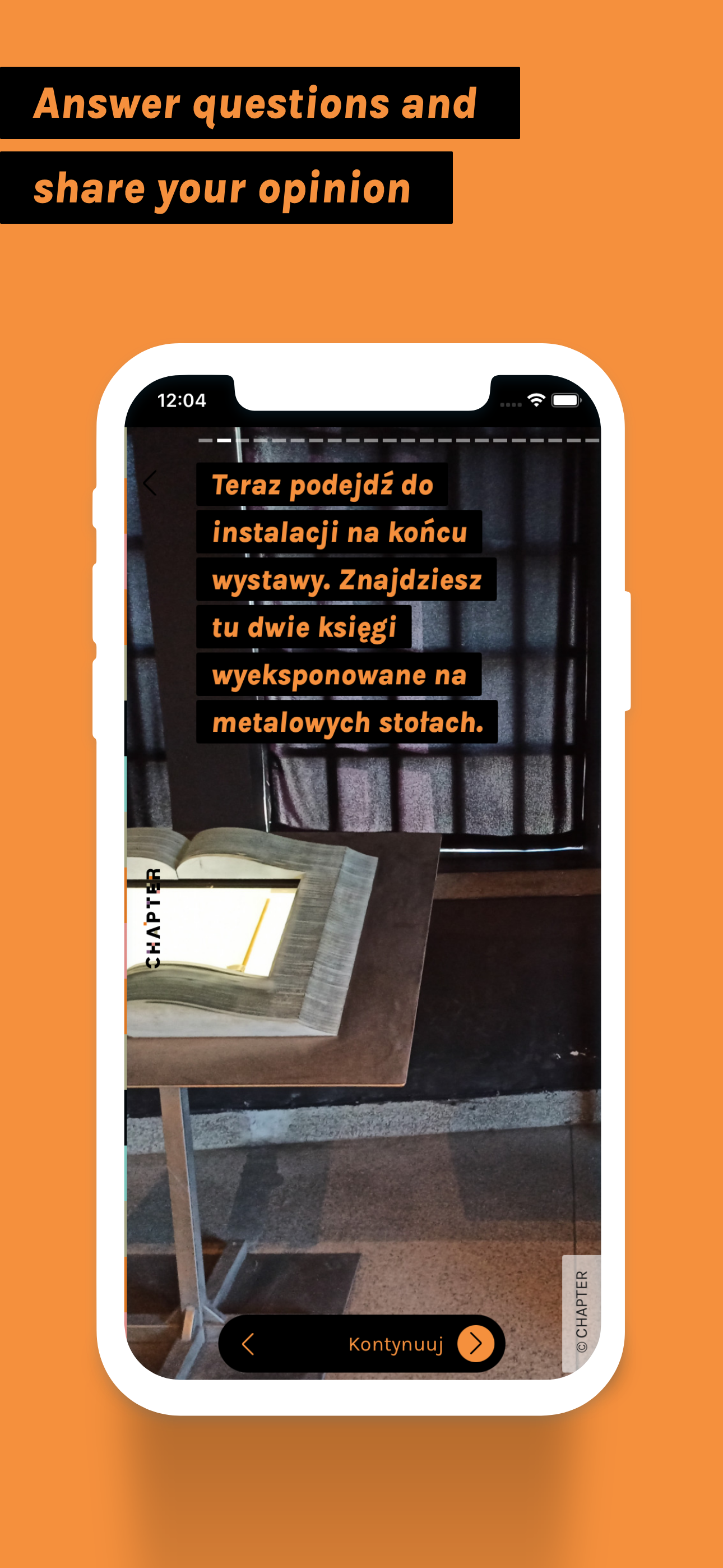CHAPTER App


The CHAPTER app was developed by the academic research project ‘Challenging Populist Truth-Making in Europe’ (CHAPTER for short), funded by the Volkswagen Foundation, at University of Tübingen, Humboldt-Universität zu Berlin, University College London and Jagiellonian University (Krakow) in collaboration with software developer Fluxguide in Vienna. The app is a digital tool that allows young visitors to learn more about populism. It is tailored towards three different museums and their exhibitions: the exhibition BERLIN GLOBAL by the Berlin City Museum located at the Humboldt Forum Berlin, the Oskar Schindler Enamel Factory in Krakow, and the Museum of London. Far from being a conventional museum guide, the app employs interactive and digital tasks that blend elements of video gaming with social media aesthetics. In several chapters, the app takes its users to different objects in the museum that deal with topics such as sports, posters, music, or food - and it explains how these topics are related to populism. As users progress through the chapters, they gain more knowledge on how populism works and how it fuels polarization and conflict in our society. This enables individuals to recognize and critically analyze populist strategies encountered in daily life. The CHAPTER app can be used directly on-site in the BERLIN GLOBAL exhibition at the Berlin City Museum in the Humboldt Forum in Berlin and the Oskar Schindler Enamel Factory Museum in Krakow. The version for the Museum of London can be used without being on-site. Usage is free of charge and the three versions are available in the respective national languages and English.
Download
You can download the app for free from Apple’s AppStore or the Google Play Store. Follow this link to find the download for your platform - IOS and Android
Project Video
Watch the introduction video here.
Best-Practice-Portfolio
Based on our experiences in co-designing and developing the CHAPTER app, we created a publication in a hands-on format that is tailored towards museum professionals and enhances the sustainability of the project. The best practice portfolio is more than merely a documentation of the project; it reflects the collaborative development process and the principles we developed, and it provides other practitioners, experts, and researchers with the necessary information about both the potentials and the challenges that the development of similar museum apps may hold. You can download the publication here: Pia Schramm & Christoph Bareither (2025). Designing a Museum App for Political Engagement: Reflections on the CHAPTER Project for Museum Practitioners, Educators and App Designers. Tübingen: Tübinger Vereinigung für Empirische Kulturwissenschaft e. V.



Digital Technologies
Combining Ethnographic Research with Innovative Digital Technologies
The CHAPTER app is based on an extensive research process. The project team conducted in-depth ethnographic fieldwork in the three museums in Berlin, Krakow and London. Visitor observation and an examination of their engagement with digital technologies in and around museums were one pillar of the development of our app, helping us to understand the emotional capacities of specific objects. An explorative study on the potentials and limits of digital apps and educative platforms in the context of museums and politics constituted a second pillar. The ethnographic research on existing apps provided us with additional insights into the usability of mobile applications in museum spaces. The third pillar for the development was a comparative interview study conducted with museum professionals in Germany, the UK, and Poland, which enabled us to map out several ‘facets’ of populism. The app combines these different pillars by allowing visitors to engage with museum objects (and their emotional potential) through playful and reflexive digital formats in order to critically engage with and learn about different facets of populism. The final version includes nine “chapters” in Berlin, seven in Krakow, and six in London. A diverse range of digital content (text, images, videos) and external links for further reading, as well as a glossary, were introduced to enrich the experience.
Co-Designing Digital Technologies
The development of the CHAPTER app also relied on a process of co-design with young visitors, which allowed us to optimize the user experience and add new content that resonates with the interests of the app’s target group. The software developers from Fluxguide provided us with a content management system that allowed us to change and update the app’s content at any time. In this way, the suggestions made by young museum visitors could be implemented on the spot. Based on this infrastructure, the researchers visited the museums with various groups of young visitors, getting their feedback and engaging in critical reflection on the app. The setup of the co-design sessions followed a standardized structure that allowed for a comparative analysis. Ethnographically accompanied by the researchers, students were initially testing the app’s prototype in the exhibitions. The groups then worked on individual chapters and made suggestions on both content and technical functions. Co-designed elements were directly included, which further enhanced the critical engagement of other student groups testing the co-designed version in the following sessions. Drawing on the skills and knowledge of young testers, we could assess the relations and synergies between the affordances of the app and the affordances of the museum objects. One group of students conceptualized their own chapters, one of which found its way into the final version of the app. The evaluative feedback was additionally enriched by several curators and educators in our partner museums who extensively commented on content suggested by the research team.